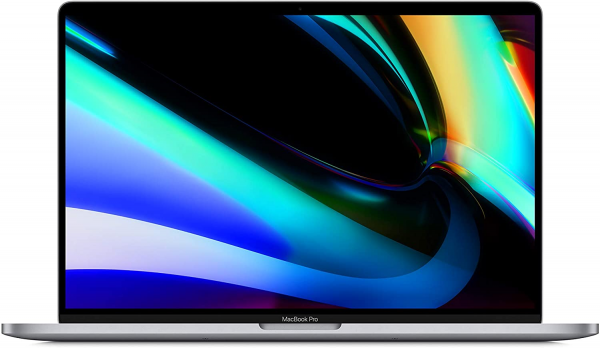Apple
Apple MacBook Pro 16: new format and extraordinary endurance
Aprox. 2768€
See specificationsWith the MacBook Pro 16, Apple has adopted a new format for its screen, which is still as neat as ever, and has chosen certain sure values by abandoning the butterfly keyboard in favor of the Magic Keyboard. But does this model hold more surprises?
Our review
Presentation
Apple is shaking up its range with this new MacBook Pro. Replacing the 15-inch model, this model wants to be the goal ultimate laptop, in terms of both finish and power. Aimed above all at creatives looking for quality and a particular software ecosystem, it seeks to seduce with its screen of unprecedented size, its worked chassis and its high-end Intel processor - we will choose between a Core i7 and two Core i9, all of 9th generation, all placed in the "H" category, high performance.
The size is not the only novelty of this MacBook Pro 16. Apple for example listened to the comments on the famous butterfly keyboard by replacing it with a keyboard called "Magic Keyboard". Similarly, the audio part has been revised, since the computer now offers six speakers instead of four. Novelties that seem minor at first glance, but which considerably improve the experience and testify to the attention to detail on the part of Apple.
But is the MacBook Pro 16 free from blame? This is what we will check immediately.
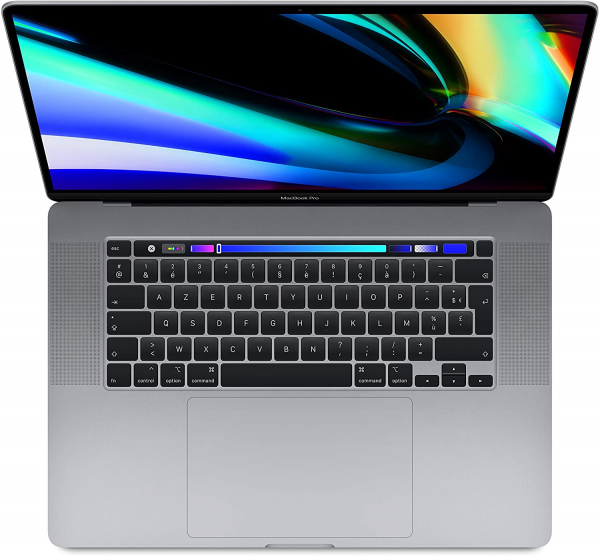
Construction
MacBooks have accustomed us to an impeccable level of finish. The MacBook Pro 16 is no exception. It still has a sober gray anodized aluminum chassis. We are on familiar ground, the only big news being the format. If it is slightly larger than the 15-inch model, it is a few millimeters. The screen occupies 86% of the facade and therefore allows thinner edges, which does not make it much more massive than its predecessor, which had a screen / facade ratio of 77%.
The MacBook Pro 16 has a second screen: the Touch Bar. This Oled screen located between the keyboard and the main screen is a line of additional and dynamic keys. If it is used to manage the brightness or the sound on the desktop, it also adapts to the application used, displaying, for example, the navigation bar on Safari or the playback bar on Netflix. The use of the Touch Bar does not change with this new model. However the functionality undergoes some evolutions. Thus, the Escape key is no longer integrated into the screen, becoming a separate mechanical key. Same thing for the Touch ID (fingerprint sensor). It always works perfectly, whether to unlock your session or make purchases on the Internet via Apple Pay. The webcam, although present, does not allow you to unlock the session, as may be the case on certain high-end PCs running Windows.
Coming back to the Touch Bar, it is designed to work in concert with the MacBook Pro 16 operating system, we are obviously talking about macOS. The product is, like all those from Apple, powered by the latest version of macOS, namely Catalina which brings some new features. We can notably mention Sidecar, which allows to transform an iPad Pro into a second screen.
Apple has learned from its keyboard errors. The butterfly keyboard of the MacBook Pro has caused a lot of ink to flow due to its unreliability, a simple speck of dust can clog its operation. The MacBook Pro 16 incorporates, for the first time, its successor, namely the Magic Keyboard. This is a variation of the iMac keyboard adapted to the laptop. The stroke is certainly longer than on the butterfly keyboard (which slightly thickens the chassis) and the typing gives a different feeling. It remains very pleasant despite an always short race which risks disconcerting some. The trackpad, still as large, is also an example to follow, as it is pleasant and efficient.
It is a habit now with the manufacturer: the connection is limited to the bare minimum. The MacBook Pro 16 only accepts four USB 3.1 Type-C ports compatible with Thunderbolt 3 on its edges. To this must be added a headset port, but nothing more. A simple connection totally assumed by Apple. To connect a USB Type-A device, connect an external screen or take advantage of an Ethernet socket, the user will have no choice but to go through adapters.
The 16-inch MacBook Pro cannot be disassembled. It is possible to remove the screws located under the chassis with a Phillips screwdriver, however the cover cannot be removed without risk, because it is glued to the other part of the computer. Dismantling it completely would not advance the user anyway. iFixit, which has risked performing the operation, indicates that it is not possible to change the parts, whether it is RAM or storage. It will therefore not be possible to change the configuration of the MacBook Pro 16.
Our test product accommodates the most powerful processor in the range. With an Intel Core i9-9980HK in a 16mm chassis, the management of the heating is not easy - the chip is still indicated for a thermal envelope of 45 W. The Cupertino brand does no miracles. Thus, when it is used (when a game is launched for example) the processor rises to 86 ° C. The chassis heats up logically, but its temperature of 46 ° C above the Touch Bar remains acceptable. Regarding fan management, Apple had to make a sacrifice, since we measured noise pollution at 47 dB. This is a lot, and it could disturb the environment of the user. On the other hand, the MacBook remains silent in office use, the fans barely get along (37 dB).
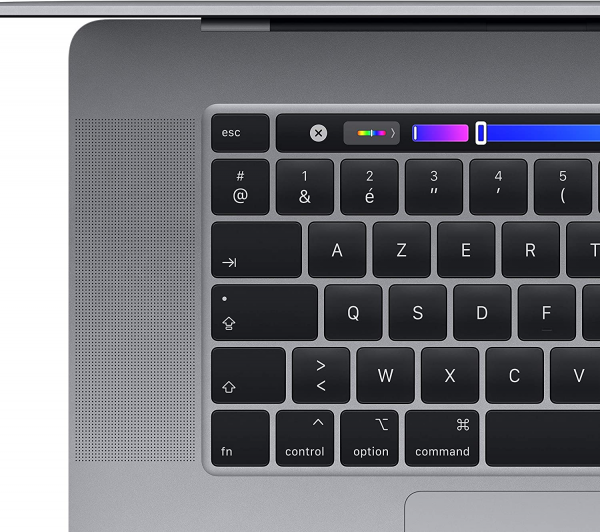
Screen
The special feature of this new MacBook Pro is obviously its screen. It is indeed the first Apple computer to have a 16-inch panel, and this size remains very rare on the market. IPS, the MacBook Retina display has a resolution of 3,072 x 1,920 px and a refresh rate of 60 Hz.
Let's immediately remove the biggest flaw of this screen: afterglow. Measured at 30 ms by us, it is very high as often with IPS panels. In fact, this means that "fuzzy streaks" will annoy the most sensitive users when moving on the screen - during the viewing of a film, for example. Annoying, especially since the screen is exemplary apart from this detail. The contrast here is 1,313: 1, which is fine for a laptop. Respect for colors, essential for photo editing, is at the rendezvous with an average Delta E of 1.1. All the colors displayed are therefore faithful.
The high luminosity of 424 cd / m² is combined with a panel which is certainly brilliant, but hardly subject to reflections with a reflectance of 27%. Therefore, an ideal computer for working outdoors. Finally, we must dwell on dynamic temperature, a feature called True Tone by Apple. The temperature adapts to the surrounding light, the screen becoming colder in the event of lack of light, and vice versa. A technology that works wonderfully and avoids eye fatigue in the event of prolonged use. It is possible to deactivate True Tone, but it is not very relevant. In this case, the screen displays a fixed temperature of 7,085 K and therefore slightly turns blue when a blank page is displayed.
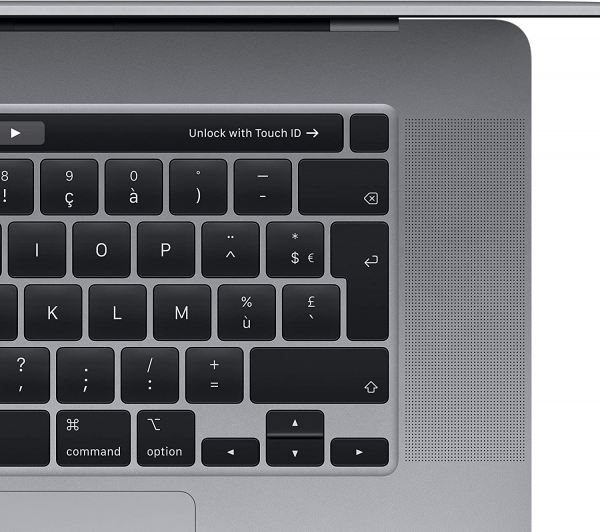
Performances
The test version of our 16-inch MacBook Pro is equipped with an Intel Core i9-9980HK processor with 8 cores, 16 threads and etched in 14 nm. Its turbo frequency is high, rising to 5 GHz. It is the most high-end chip in the Intel catalog at the moment, which suggests one of the best results from our panel, at least in theory. It is accompanied by 32 GB of RAM in dual channel as well as a 2 TB SSD. To conduct our tests, we installed Windows 10 on the machine. The idea is simple: to be able to use all of our test software, not all available in macOS versions. It is not to be excluded that some additional refinements on the management of the processor could be present under macOS, but these results are already a good indicator of the capacities of the machine.
The Intel Core i9-9980HK does not disappoint, since it delivers the best results of our test panel with an index of 103, leaving all the other PCs in the rear view mirror. Such power logically causes heating at the processor. We saw previously (see Construction) that its average temperature was 86 ° C during work. In reality, it oscillates between 80 ° C and 92 ° C, without ever stabilizing, the processor drawing a lot of energy with its 8 cores. To control this heat, Apple had to play with the frequency of the processor, which, instead of setting itself on a precise rhythm, makes the yo-yo between 2.5 GHz and 3.8 GHz. The cooling system must dissipate the heat, which causes the very strong breath noted above. This reflects the complexity of managing such a processor in such a thin chassis.
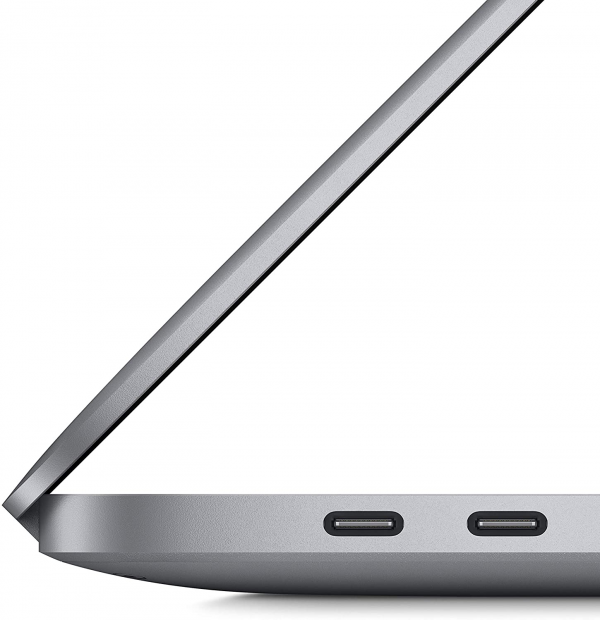
Games
The MacBook Pro 16 is equipped with an AMD Radeon Pro 5500M graphics card, modest in theory. Again, for the sake of compatibility, we performed our tests on Windows 10, installed via Bootcamp.
During our test protocols, the graphics card delivered correct results with 1080p games and the graphics adjusted to the maximum. The Radeon Pro 5500 M has reached the index of 70 on our scale of values, which places it between Nvidia GeForce GTX 1650 and a GTX 1660. Its frequency is correct with an average measured at 1,144 MHz (and stable!). It is thus possible to play smoothly, without reaching 60 fps, gourmet games on Windows. The same is true on macOS, Mac compatible games being at the same level. The addition of a dedicated graphics card within this machine does not mean that it is intended for a video game activity, at least initially. Indeed, if Apple offers a dedicated GPU, it is above all to speed up certain tasks for which the graphics chip can be used. This is particularly the case for video editing or encoding applications, 3D modeling, any software that can be used by creative people.
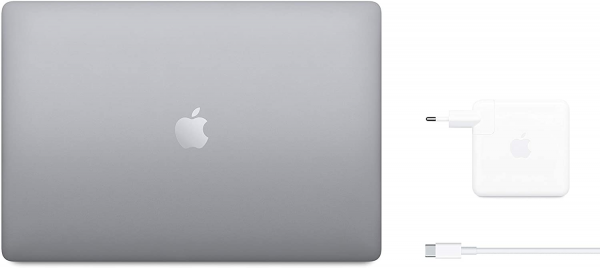
Mobility / Autonomy
The 16 inch format does not seem conducive to ultraportability. However, Apple wanted to gain as much weight and finesse for this model. Displaying only 2 kg on the scale and being 16 mm thick, it is easy to transport, provided you have an adequate backpack. The charger, barely larger than that of a smartphone, is also light with its 372 g. But it will not be necessary to take it everywhere, as the autonomy of the computer is excellent.
It is rare for a computer to exceed 10 hours of autonomy during a test, but even more to see one almost reach 15 hours. During our usual protocol on macOS (Netflix on Safari, brightness set to 200 cd / m2 and headphones plugged in), the 16-inch MacBook Pro shut down after 14 h 43 min. This is the highest score in the history of dev.rankuzz.com. Needless to say, it will be possible to last an entire day with your MacBook Pro 16 without worrying about recharging. Apple remains true to its reputation by offering an ultra-durable computer since it must be remembered that the previous regulators of our record were almost all MacBook Pro. For example, the best PC in this segment reached 11 h 10 min during our test. This is the HP Elitebook x360 G6.
Audio
The 16-inch format allowed Apple to add two additional speakers compared to the 15-inch model, bringing their total number to six. The manufacturer succeeds in a feat by delivering an audio part worthy of a good portable speaker in such a small chassis. Powerful, balanced with a higher bass presence than on most PCs on the market and providing impeccable stereo, the sound of the MacBook Pro 16 is a real pleasure for the ears. This excellence is supported by the fact that the speakers are placed on the front, on either side of the keyboard.
The headphone jack is also exemplary. We would have liked a better stereo separation, but we quibble, Apple having once again done a good job.
Conclusion
Apple has taken care of its MacBook Pro right through to the end. Difficulty to find real faults with this computer, as the Cupertino brand has worked on its smallest details, whether the screen, the keyboard, the Touch Bar or the autonomy. Ultra-high-end par excellence, the 16-inch MacBook Pro is an example to follow in this segment.
Specifications

